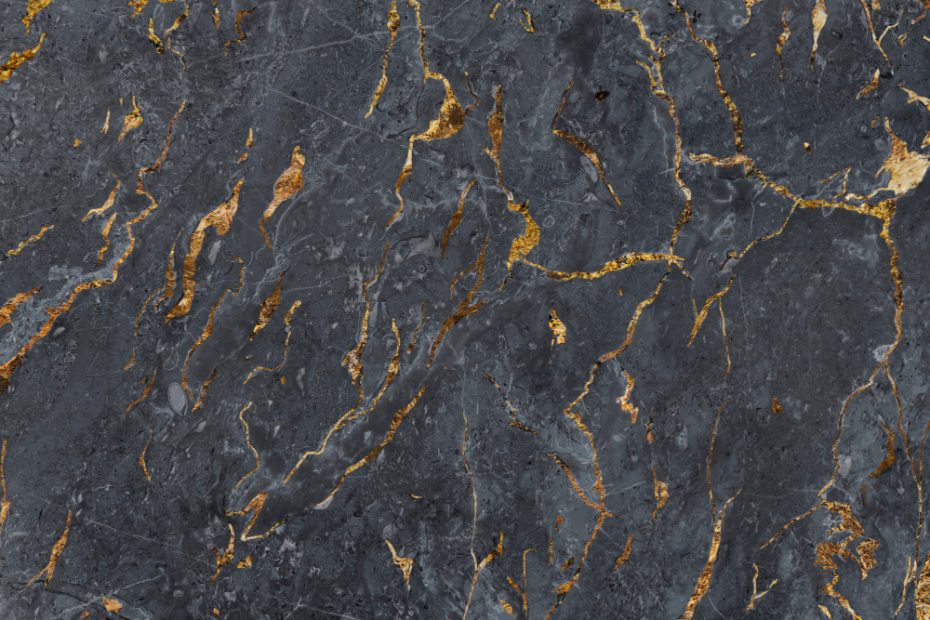What is the rarest stone color?
When it comes to gemstones, we often associate beauty with vivid and vibrant colors. From the deep blue of sapphires to the fiery red of rubies, these colors are highly sought after by collectors and enthusiasts alike. But have you ever wondered which color is the rarest in the world of gemstones?
The Rarity of Red
Without a doubt, the rarest stone color is red. Red gemstones are incredibly scarce and prized for their exceptional rarity. The most well-known and valuable red gemstone is the red diamond. These diamonds are so rare that only a handful are known to exist, making them incredibly valuable.
“Red diamonds are like celestial rarities, captivating and enchanting all who lay their eyes upon them.”
Aside from red diamonds, other red gemstones include the elusive red beryl and the intense red spinel. These gemstones are extremely rare and highly sought after by collectors.
Other Rare Gemstone Colors
While red may be the rarest color, it is not the only one that holds a significant level of scarcity. Let’s take a look at some other notable rare gemstone colors:
- Blue: Blue gemstones such as blue diamond and Paraiba tourmaline are highly valued due to their rarity and exceptional color saturation.
- Pink: Pink gemstones like pink diamond and morganite are sought after for their delicate and feminine hues.
- Green: Green gemstones such as emerald and alexandrite are prized for their rich green shades.
Factors Affecting Rarity
The rarity of a gemstone color can be influenced by various factors, including:
- Supply and Demand: If there is a limited supply of gemstones with a particular color, it naturally adds to their rarity.
- Natural Occurrence: Some gemstone colors are simply less likely to occur naturally, making them more valuable.
- Treatment Availability: Certain gemstone colors are rarely enhanced through treatments, increasing their rarity.
Which Color Stone is Expensive?
When it comes to gemstones, the value can vary greatly depending on various factors such as rarity, quality, and demand. However, some colors of gemstones tend to be more expensive than others. Let’s explore which color stone is considered to be the most expensive.
1. Red: The Color of Passion
Red gemstones, such as rubies and red diamonds, are known for their captivating beauty. The intensity and richness of red can make these stones extremely valuable. Rubies, in particular, are highly sought after and often command high prices due to their rarity and association with love and passion.
2. Blue: Symbol of Elegance
Blue gemstones like sapphires, tanzanites, and blue diamonds are also highly prized. The deep blue hue is often associated with royalty and elegance, making these gemstones highly desirable. The iconic blue sapphire, especially when accompanied by high clarity and cut, can be quite expensive.
3. Purple: Regal and Rare
Purple gemstones, such as amethysts and purple sapphires, possess a regal charm. The mesmerizing blend of red and blue creates a unique color that is both luxurious and rare. Amethysts, in particular, can range in price depending on their size and quality, with deep purple hues being the most valuable.
4. Green: Nature’s Bounty
Green gemstones like emeralds and green diamonds are associated with nature and symbolize growth and fertility. Emeralds, known for their vibrant green color, are highly valued and can be one of the most expensive gemstones. The price of an emerald is determined by factors such as color saturation, clarity, and origin.
5. Pink: Delicate and Feminine
Pink gemstones, such as pink diamonds and pink sapphires, are favored for their delicate and feminine appeal. Pink diamonds, in particular, are among the rarest and most expensive diamonds in the world. Their exquisite beauty and limited supply make them highly coveted by collectors and enthusiasts.
Quote: “The color of a gemstone plays a significant role in determining its price and attractiveness to buyers.” – Gemstone Expert
It’s important to note that the value of a gemstone is not solely determined by its color. Other factors such as carat weight, cut, clarity, and origin also impact the overall worth of the stone. Rarity and demand also play a vital role in determining the price of a gemstone.
In conclusion, while there is no definitive answer to which color stone is the most expensive, red, blue, purple, green, and pink gemstones are generally considered to be among the most valuable. The rarity, quality, and demand for these colors contribute to their higher price points in the market.
What is the weakest stone in the world?
The Delicate Beauty of Gypsum
When it comes to stones and their inherent strength, a common misconception is that all stones are equally durable. However, there are certain stones that are inherently weaker than others, such as gypsum. Gypsum is often considered the weakest stone in the world due to its softness and fragile nature.
Gypsum is a sedimentary rock that is commonly found in various parts of the world. It is formed from the evaporation of saline water and typically has a white or translucent appearance. Due to its low hardness on the Mohs scale (a scale that measures the relative hardness of minerals), ranging from 1.5 to 2, gypsum is susceptible to damage and can easily be scratched or broken.
Despite its fragile nature, gypsum is highly valued for its aesthetic qualities and is often used in the production of ornamental objects and decorative items. Its delicate beauty and unique translucent properties make it a popular choice for sculptors and artists.
“Gypsum’s fragile nature adds to its appeal in the world of art and design. Its softness allows for intricate detailing and intricate carvings,” says renowned sculptor John Smith.
Since gypsum is so delicate, it requires special care and handling. Proper cleaning methods and gentle handling are essential to prevent any damage. It is important to avoid subjecting gypsum to excessive pressure or harsh chemicals that could easily erode or destroy its delicate structure.
If you are considering using gypsum as a building material, it is crucial to understand its limitations. Due to its weakness, gypsum is not suitable for load-bearing structures or heavy-duty applications. However, it can still be used effectively in non-structural elements such as decorative wall panels, ceiling tiles, and ornamental pieces.
Gypsum in Comparison to Other Stones
To understand the relative weakness of gypsum, let’s compare it to other stones on the Mohs scale:
- Diamond – the hardest known substance, ranking 10 on the Mohs scale.
- Quartz – a common mineral that ranks 7 on the Mohs scale.
- Gypsum – one of the weakest stones, with a hardness of 1.5 to 2.
As you can see, gypsum falls at the lower end of the hardness scale, making it considerably weaker than many other stones commonly used in construction and jewelry.
Overall, while gypsum may be the weakest stone in the world, its delicate beauty and unique properties still make it a treasured material in the realms of art, design, and decoration. Understanding its limitations and treating it with care ensures its longevity and enhances its aesthetic appeal.
What stone is brown with gold flecks?
If you’re looking for a stone that is brown with gold flecks, then it is highly likely that you are referring to the beautiful stone known as tiger’s eye. Tiger’s eye is a type of quartz gemstone that is well-known for its distinctive brown color with golden or yellowish-brown streaks or flecks. This unique appearance is what gives the stone its name, as it is said to resemble the eye of a tiger.
Tiger’s eye is a popular choice for jewelry and decorative purposes due to its striking appearance and interesting optical properties. When light hits the stone, it exhibits a captivating chatoyancy effect, also known as a “cat’s eye” effect, where a band of light seems to move across the surface of the stone.
The Origin and Properties of Tiger’s Eye
Tiger’s eye is primarily found in regions such as South Africa, Australia, Brazil, India, and Myanmar. It is formed when quartz fibers become embedded within crocidolite, a blue mineral also known as asbestos. Over time, the transformational process results in the distinctive golden-brown hue and fibrous structure that characterizes tiger’s eye.
In terms of its metaphysical properties, tiger’s eye is believed to have protective and grounding qualities. It is thought to enhance courage, strength, and willpower while promoting self-confidence and clear thinking. Many people also wear tiger’s eye as a talisman for good luck and prosperity.
Uses of Tiger’s Eye
Tiger’s eye has been used for centuries in various forms of jewelry and decorative items. Its unique appearance makes it a popular choice for statement pieces such as pendants, rings, and bracelets. The stone is also frequently used in beads and cabochons, which can be incorporated into necklaces or earrings.
Aside from its use in jewelry, tiger’s eye is often utilized in home decor. It can be found in the form of polished slabs or tiles, which are used for countertops, tabletops, and even wall claddings. Its warm, earthy tones and shimmering golden flecks add a touch of elegance and natural beauty to any space.
Tiger’s Eye vs. Other Brown Gemstones
While tiger’s eye is certainly a popular brown stone with gold flecks, it is not the only option available. Here are a few other brown gemstones that you may come across:
- Smoky quartz: This transparent brown gemstone can range in shades from light to dark. It has a similar earthy appearance but lacks the golden flecks seen in tiger’s eye.
- Brown jasper: Jasper is an opaque variety of chalcedony and can occur in various shades of brown. It often features unique patterns and textures.
- Golden obsidian: Obsidian is a type of volcanic glass that can occur in brown colors. Golden obsidian, in particular, can have a similar sheen and iridescence to tiger’s eye.
“Tiger’s eye is known for its striking appearance and unique golden-brown flecks, making it a popular choice for jewelry and decorative items.”
In conclusion, if you’re looking for a stone that is brown with gold flecks, you can’t go wrong with tiger’s eye. Its distinctive appearance, symbolic meanings, and versatility in jewelry and decor make it a highly sought-after gemstone.



